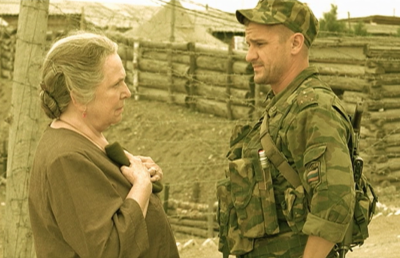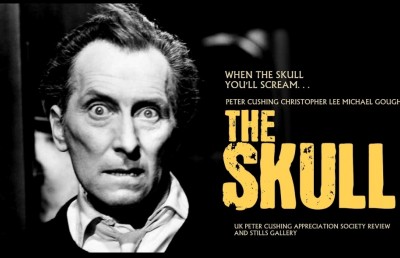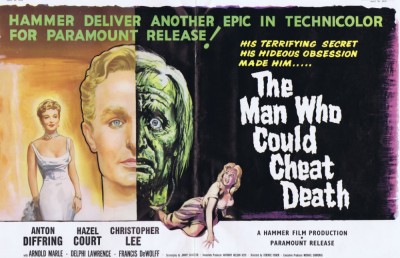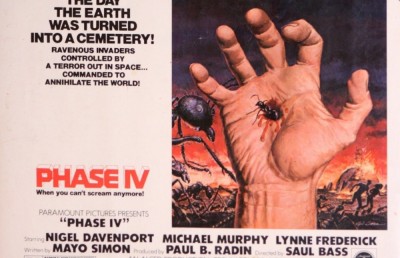Casual Masculinity, Significant Responsibility: The Big Lebowski
“Take It Easy, Man”
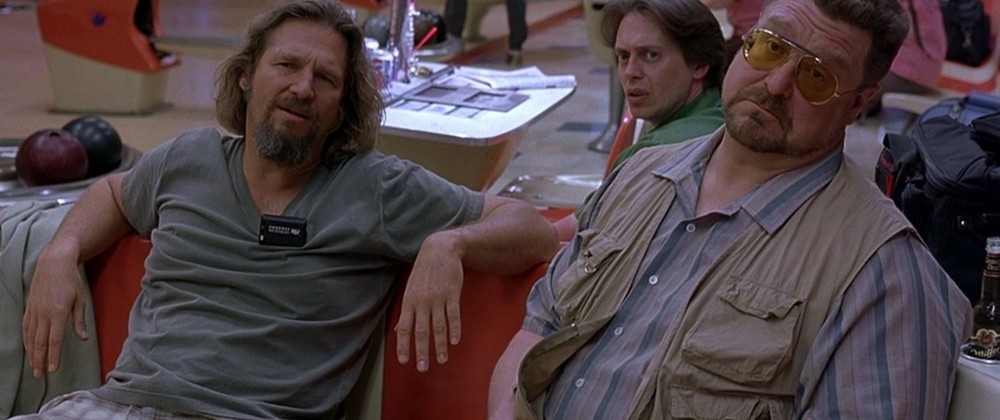
The Big Lebowski
By J. M. Tyree and Ben Walters
BFI (British Film Institute) Film Classics, 2007
123 pages
ISBN 978-1-84457-173-4
“I happen to find dreariness very beautiful.”
—Woody Allen, Conversations with Woody Allen
When a decade ago, I saw The Big Lebowski, I had no idea I was watching a phenomenon: it is a comedy, written by the Coen brothers, Ethan and Joel Coen, and directed by Joel and produced by Ethan, starring actor Jeff Bridges as Jeffrey Lebowski, a soft, plump, pleasantly lazy, often inebriated or stoned man, a man of no great purpose or obvious significance, a middle-age slacker, an aging hippie, who often wears shorts and a bathrobe, having no reason to cultivate an image, an ordinary dude, whose friends include a raging Vietnam veteran, Walter (John Goodman), and a former surfer, Donny (Steve Buscemi), two of his bowling buddies. The dude Jeffrey Lebowski, or the Dude, becomes involved in a complex adventure, when men break into his California (Venice) bungalow, abuse him, and urinate on his rug. Why do they do this? They believe him to owe money, which they have come to collect; and theirs is a tactic of intimidation and warning. It seems the Dude, a small man in the scheme of the world, has been mistaken for someone else with the same name, mistaken for a reputed millionaire, an important someone, The Big Lebowski, whose young wife Bunny is said to have created the debt the men came to collect. The Dude visits the big man to describe the confusion and get compensation for his ruined rug, which the Dude says held its room together; and, with that, the adventure accelerates, with the Dude soon investigating a kidnapping plot involving Bunny, in which the Dude meets various characters, certain danger, and intrigue. The film, originally released in the late 1990s (1998), has become by now, ten years later, a work of cult admiration, the focus of regular festivals attracting its admirers, who quote some of its lines—about aggression and bums. It is a funny film considered funnier upon revisiting, something that may suggest the makings of a classic. A British Film Institute publication, The Big Lebowski by J. M. Tyree and Ben Walters, commemorates that interest and explores the film’s subjects: friendship, masculinity, responsibility, and serenity among them. The authors call the motion picture The Big Lebowski a film of ideas, the kind of assertion many might be inclined to scoff at—its lead character walks around in shorts and his motivating concern is his rug! However, the commentary by Tyree and Walters shows that, indeed, the film is about some important subjects, and touches on as significant themes, such as disjunction, miscommunication, and misidentification: like much good work, the film—which is not in line with expectations about character or heroism, and also plays with genre expectations (is it a comedy, a film noir, a western?)—is partly about perception itself, teaching along the way “the virtue of humble good humour” (12), as it “revels in wanton, riotous variety” (page 14): “What emerges from the tangle is a very funny film about real things and the search for meaning: not just a solution to a mystery, but an ethos by which to navigate a jumbled place in jumbled times” (14 to 15).
It is interesting that some of what Tyree and Walters champion as admirable aspects of style were seen as questionable upon the film’s original March 1998 appearance, following a January 1998 special Sundance festival screening. Jonathan Rosenbaum’s 1998 Chicago Reader commentary, in which he compared the Coen brothers The Big Lebowski with film director Robert Benton’s Twilight, identified much of what Tyree and Walters has, but Rosenbaum saw those elements very differently. Rosenbaum refers to the Coen film’s aesthetic as a “gaudy bag of tricks, whose cleverness and imagination exist mainly for their own sake”; and, though Jonathan Rosenbaum noted the filmmakers attempt to establish the appeal of a naïve and passive though moral lead character, Rosenbaum found most of the film’s characters “a succession of autonomous freaks.” Writing in the entertainment industry publication Variety (January 20, 1998), Todd McCarthy offered compliments that were then qualified, and qualified in ways that were echoed by Rosenbaum, when McCarthy wrote: “Spiked with wonderfully funny sequences and some brilliantly original notions, The Big Lebowski, a pseudo-mystery thriller with a keen eye and ear for societal mores and modern figures of speech, nonetheless adds up to considerably less than the sum of its often scintillating parts, simply because the film doesn’t seem to be about anything other than its own cleverness.” What is particularly notable is McCarthy’s assertion that “the Dude is a character who produces an equivocal reaction; on the one hand, he is a classic ordinary man thrown into an extraordinary situation, while on the other he is a loser with no backbone who provides no motivation for the viewer to get behind him.” McCarthy’s judgment regarding why we should or should not care about or respect the character could not be more stark or more invested with certain recognizable assumptions about personal and social value. It is a cliché that art that used to be associated with the wealthy and successful was more respected than art associated with the poor and failing or failed, and there could be a trace of that in McCarthy’s conclusion—but what is more important to me is whether meaning can be achieved accidentally, or to what extent significant meaning can be achieved accidentally. Is the small Lebowski—described by Desson Howe (now Desson Thomson) in his March 6, 1998 Washington Post review as, thanks to actor Jeff Bridges, having a “princely dopiness”—capable of heroism or significance? Is it heroism or significance that those who like the film actually see in the Dude, or is it his encapsulation of the ordinary that they embrace, leaving interested writers to construct an argument to justify a guilty pleasure?
The book The Big Lebowski by J. M. Tyree and Ben Walters is small, compact, and deliciously readable. It contains an introduction discussing the film’s immediate and developing reception (its appreciation and success were modest at the time of its initial release: apparently the _Village Voice_’s J. Hoberman and _Time Out_’s Geoff Andrew offered some words of regard, seeing humanity and heroism as subjects in the film); and the book The Big Lebowski contains four main chapters—“The Mix-tape Movie,” “Out of the Past,” “What Makes a Man?” and “The Religion of Laughter”—followed by short useful textual notes, detailed film credits, and a bibliography of books regarding subjects or themes directly or indirectly referred to in the main text. In “The Mix-tape Movie,” the authors J.M. Tyree and Ben Walters remark on a collage technique as a particular, recurring aspect of the aesthetic of the Coen brothers, whose works include Blood Simple (1984), Raising Arizona (1987), Barton Fink (1991), Fargo (1996), O Brother, Where Art Thou? (2000), Intolerable Cruelty (2003), and No Country for Old Men (2007); and that collage technique is seen in the film The Big Lebowski, with its mix of characters, settings, and themes: “no other movie has found space for tumbling tumbleweeds, slo-mo bowling, somber, firelit great-room scenes, geometrically choreographed dance routines and VHS porn” (16).
The film is set in the early 1990s, “the 1990s, the decade in which popular culture became ever more knowing and even more infantile” (17), though as the film unfolds there are references to different historical periods, something that seems the result of a fine intuition (we live with different aspects of history): “Explicitly riffing off the Chandler stories of the 1930s and the 1940s and featuring dream sequences inspired by movie fantasias of the same period, it also evokes the 1950s and the 1960s through fetishistic shots of classic ‘Brunswick’ bowling designs and space-age ‘Googie’ architecture, while its characters are patently defined by the late 1960s and to, to a lesser extent, the 1970s and 1980s” (17). Two of its central characters, the Dude and Walter, bowling buddies, are seen as opposites: relaxed versus angry, a laidback 1960s radical involved with the Port Huron statement versus a bitter Vietnam war veteran; but, as the film moves, it seems that each character has some complexity, depth, perversion, or talent that is not immediately apparent. Even the film’s music (from Bob Dylan to Meredith Monk to Esquivel to Nina Simone to Mozart) seems to work at suggesting clues to temperament and feeling. (“If you have a good picture and you put in good music, it’s like pushing a winning hand in poker. It’s a good feeling. If you have a mediocre picture or a bad picture and you put in good music, you can help yourself a little bit, but you can’t save a bad film with music,” the comedian and film director Woody Allen told journalist Eric Lax (Conversations with Woody Allen: His Films, the Movies, and Movie Making, Knopf, 2007; 306.) The characters’ dialogues—not articulate by most English department standards—do suggest grappling with experience and knowledge, instinct and morality. (“…’60s hippie-ese, Reagan-Bush era pronouncements or up-to-the-minute street talk—represent a study in the avoidance of precise and direct verbal communication,” wrote Todd McCarthy in the January 20, 1998 Variety review of the film.) Despite what seems a simple object of contemplation—the Dude—the film’s texture is increasingly enriched, and made funny, and interesting, by the misidentification and miscommunication that occur: who and what are to be trusted and why?
What is to be known and understood? Flawed perception and thought can be large or small; and in one instance characters confuse John Lennon and Vladimir Lenin, and in another a terrier is confused with a Pomeranian. The characters, who talk about, at, and through each other, include, but are not limited to, The Big Lebowski (David Huddleston), his experimental artist daughter Maude (Julianne Moore), his young wife Bunny (Tara Reid), another small Lebowski bowling associate Jesus Quintana (John Turturro), and the cowboy-hat wearing Stranger who sometimes narrates the film (Sam Elliott). The Dude wants things to be easy, Walter is enraged by Vietnam or official disappointments, Maude wants art and a child, Bunny wants money, Jesus wants to win at bowling and possibly sex with inappropriate partners, and The Big Lebowski, who seems to embody money and power, wants or needs what we do not expect. However, the Dude, in quietly and naturally questioning some of the things he is told, and inclined “to take issue with lies and non sequiturs establishes the Dude as a rare bird in his surroundings, a character who takes meaning seriously” (37). His rather casual honesty is what will help him, an improbable detective, to discover what is at the root of the film’s mystery.
“I always try to fit the style of the movie to the content,” said Woody Allen (Conversations with Woody Allen; page 243); and Ethan and Joel Coen seem to have evolved a style for The Big Lebowski that fits its content. The film’s offering of references to history and culture, in characters, conversation, settings, and plot, create a pastiche, in which, for instance, Raymond Chandler’s work, and the films inspired by his work, are quoted, revised, and mocked; and these references are discussed in the chapter “Out of the Past”: and the authors assert, “The Big Lebowski might be a thing of rags and patches, then, but it’s not simply an extended exercise in hollow pastiche; rather it’s a film about pastiche, about sampling, magpieism, the putting on of identities, the patchwork nature of Los Angeles—and about the movies themselves” (38). Some of the details of the pastiche are finely observed and detailed by J. M. Tyree and Ben Walters (and are illustrated with black-and-white and color photographs from films such as The Big Sleep and North by Northwest and Cutter’s Way and Fargo). That demonstrates the Coen brothers’ dedication to craft and to story. Howard Hawks’s “film adaptation of The Big Sleep doesn’t tower over Lebowski; rather, it is subtly embedded and structurally parodied without becoming an overwhelming or distracting presence” (54). The morality in the film The Big Sleep is compared by the authors Tyree and Walters with that in The Big Lebowski: more heroic and humane attitudes are struck in the former (which does not mean that the latter fails to possess suggestions of genuine virtues). The atmosphere in the former is dark, where that in the latter is light, and the myriad locations in Lebowski show how diverse and spread out Los Angeles actually is. (The authors note that the dramatic emphases in mood and plot, an excess, in The Big Sleep might have been the beginning of irony in film noir.) The film The Big Lebowski shows “a real-life L.A. that isn’t much seen in film” (58). One of the things that is fascinating in these films and the Tyree-Walters text is how someone who might have been heroic in one era can seem an embodiment of negative or questionable authority in a subsequent era; and how someone in the contemporary scene, who might seem mundane, even disreputable, could have many though subtle redeeming qualities.
What, after all, does it mean to be ordinary? Does it mean, not only, that one does not embody the obvious noble or most highly regarded characteristics of one’s age, but that one also does not embody the worst? Does it mean that one is exactly like everyone else; and if so, what is everyone else like?
The subject that has driven western philosophy and culture, maybe all of the world’s culture, turns out to be one that the film handles: What does it mean to be a man? The authors J. M. Tyree and Ben Walters in “What Makes a Man” refer to the Coen brothers’ history for some sense of how the Coens have handled the subject in the past, such as with the film Barton Fink: and Tyree and Walters see a critique of masculinity and posturing in Coen films. Barton Fink, a social realist writer, is described as having “a veneer of empathy that in fact papers over an emotional deafness. Barton must confront the fact that his passionate fellow-feeling is so much narcissistic blah, his affinity with ‘the common man’ quickly dissolving when that man is laughing too loudly next door or trying to have a dance in Barton’s place” (65). What could be worse than not being the man you think you are, when your standards proclaim your values the only values? In The Big Lebowski, the Dude refuses macho challenges of the larger world; meanwhile, his friend Walter is conflicted with concerns for order and a rapacious rage (Walter is the kind of person who prefers any belief to no belief and needs the world in tune with him; however, the film will show him capable of tenderness). The Dude “has rejected conventional codes of masculinity in favour of his own terms” (85); and, of course, he does not try to impose his terms on others; and eventually he discovers the falseness of the kidnapping plot and actual bankruptcy, financial and moral, of the other Jeffrey Lebowski, who is much smaller than had been thought.
The other Jeffrey Lebowski, the man who lives in a mansion rather than a bungalow, turns out to be someone who has not earned whatever money he has, turns out not to be the man with good, strong values, but someone whose better fortune was received through his first wife, a man who is willing to do wrong—not because he has to, but because he wants to—in order to benefit: he is a hypocrite. While some people live and work and find that their best estimates of who they are fall short under duress, and are surprised by their failure to hold consistently to a high standard, he knowingly misrepresents who he is and what he wants. It is the kind of hypocrisy that inspires anger and disgust—in the film (Walter is very upset), and in life.
What does it mean to be a man? Mark Twain wrote a dialogue between two men, one old and one young; and at one point the old man says, “There are gold men, and tin men, and copper men, and leaden men, and steel men, and so on—and each has the limitations of his nature, his heredities, his training, and his environment. You can build engines out of each of these metals, and they will all perform, but you must not require the weak ones to do equal work with the strong ones. In each case, to get the best results, you must free the metal from its obstructing prejudicial ores by education—smelting, refining, and so forth” (“What Is Man?,” The Complete Essays of Mark Twain, edited by Charles Neider, Doubleday, 1963; 337). It is education that can be liberating; and education is found not only in schools but in daily experiences with other people—and yet, as the old man in Twain’s dialogue says, a man’s principal concern is his own peace of mind, which is founded on his sense of himself and his life.
The film turns out be comedy with a purpose, tweaking convention but affirming something real, ending in laughter, ending—without benefit of the characters’ planned course nor predictable sentimentality—in “a feeling of universal human fellowship,” as the authors claim in “The Religion of Laughter,” the book’s last chapter (89). Civilized values are actually sustained. The Dude has a limited interest in money, the kind of man who, typically, wants only as much as he needs, and, although he can seem terribly oblivious, he perceives the basic attributes of others: who they are, what they want, what helps or hurts them; and he seeks to harm no one. His pleasures are simple, which means that though he is not wealthy, he is hard to corrupt. It seems impolitic to use the word affirmation for such a sly, off-center film, but it is an affirmation of life, simple pleasures, plain caring.
The book that J. M. Tyree and Ben Walters have written about The Big Lebowski is a good one; and it is hard to imagine that in so short a work many writers could offer a more intelligent explication of the film. However, we are in an age when it is not difficult to argue for a wide range of works—art, fiction, film, music, plays—that years ago would have been seen as crude, incoherent, vulgar: not only has mass taste changed, but educated taste has changed, become more expansive, more liberal, more willing to suspend disbelief and give the benefit of the doubt. It is easy now to say that an unexpected work has important, though not obvious meaning—that a pile of candy on the floor or excrement in a can or a bifurcated cow is art; that all that is needed to produce literature is serious research about arcane subjects then transmitted through an eccentric point of view; that a curse-laden, misogynist, violent rap song is an expression of genuine feeling, a subversive vision, and a window into the lower class; or that a play in which characters contradict each other and themselves and which offers only slight plot development and no resolution is an experiment in form, a reflection of the indeterminate nature of human experience; or that a film about a lay-about has larger, respectable implications. The nature of human intelligence and human perception is individual, and subjective—subject to circumstance and education and feeling and imagination: and sometimes we see something as good just because we want it to be so. Is that the case with the film The Big Lebowski?
It is possible that doubt of the film’s worth arises when the character’s (or characters’) intentions are confused with that of the filmmakers. Is what is accidental for a character also accidental for the film’s writer and director? The answer is no: J. M. Tyree and Ben Walters discuss and document how precise the Coens are about writing and filming their scripts; and what we see onscreen is very much in line with their intentions—so the Dude’s discovery of meaning, and his acting in a heroic and wise way, even a casually heroic way, is not accidental for the filmmakers—and may illustrate how some of us back into doing good (film director Jean Renoir has been quoted as saying that heroes usually do not look like heroes—do not look the way we expect them to look). I am willing to accept the book’s argument, and I look forward to seeing the film again.


